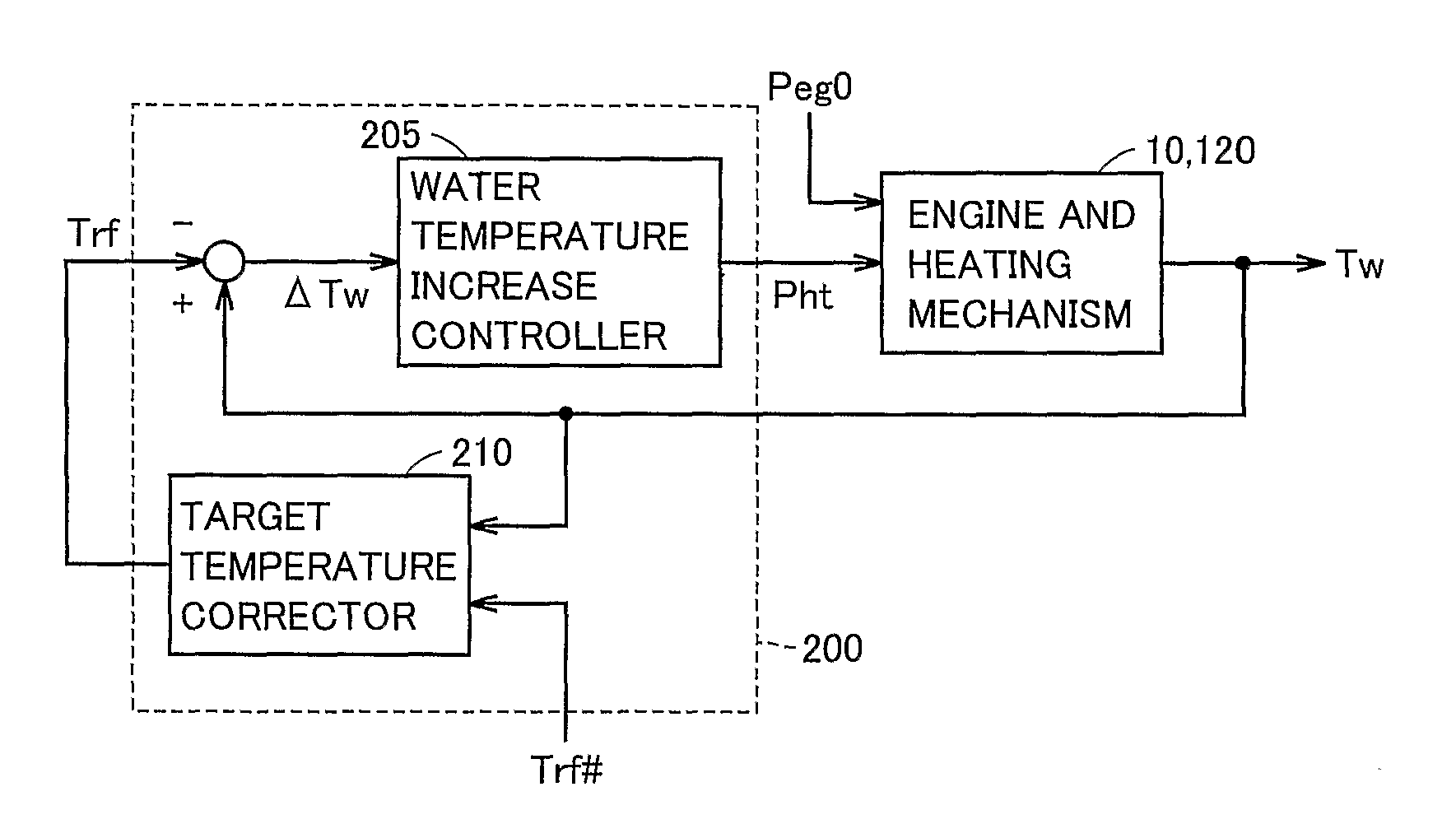Heating Control System for Vehicle
- Summary
- Abstract
- Description
- Claims
- Application Information
AI Technical Summary
Benefits of technology
Problems solved by technology
Method used
Image
Examples
Embodiment Construction
[0030] An embodiment of the present invention is hereinafter described in detail with reference to the drawings. Here, like components are denoted by like reference characters and a description thereof is not repeated.
[0031] Referring to FIG. 1, a hybrid vehicle 100 having a heating control system of the present invention includes an engine 10, a battery 20, an inverter 30, wheels 40a, a transaxle 50, an electric control unit (ECU) 90, a sunshine sensor 92, an outside air temperature sensor 94, a room temperature sensor 96, a water temperature sensor 98, and an air conditioning apparatus 110.
[0032] Engine 10 uses, as an energy source, thermal energy produced by burning such a fuel as gasoline to generate driving force for wheels 40a. Battery 20 supplies DC electric power to an electric power line 51. Battery 20 is typically comprised of rechargeable secondary cell(s), like nickel hydrogen storage battery and lithium ion secondary battery.
[0033] Inverter 30 converts the DC electri...
PUM
 Login to View More
Login to View More Abstract
Description
Claims
Application Information
 Login to View More
Login to View More - R&D
- Intellectual Property
- Life Sciences
- Materials
- Tech Scout
- Unparalleled Data Quality
- Higher Quality Content
- 60% Fewer Hallucinations
Browse by: Latest US Patents, China's latest patents, Technical Efficacy Thesaurus, Application Domain, Technology Topic, Popular Technical Reports.
© 2025 PatSnap. All rights reserved.Legal|Privacy policy|Modern Slavery Act Transparency Statement|Sitemap|About US| Contact US: help@patsnap.com



